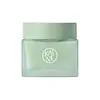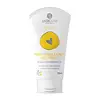What's inside
What's inside
 Key Ingredients
Key Ingredients

 Benefits
Benefits

 Concerns
Concerns

No concerns
 Ingredients Side-by-side
Ingredients Side-by-side

Water
Skin ConditioningPropanediol
SolventPanthenol
Skin Conditioning1,2-Hexanediol
Skin ConditioningCetyl Ethylhexanoate
EmollientButylene Glycol
HumectantAcrylates/C10-30 Alkyl Acrylate Crosspolymer
Emulsion StabilisingGlycerin
HumectantHydroxyethyl Acrylate/Sodium Acryloyldimethyl Taurate Copolymer
Emulsion StabilisingTromethamine
BufferingPolyglyceryl-2 Stearate
EmulsifyingGlyceryl Stearate
EmollientStearyl Alcohol
EmollientAllantoin
Skin ConditioningBetaine
HumectantSqualane
EmollientTrehalose
HumectantEthylhexylglycerin
Skin ConditioningArtemisia Capillaris Extract
Bambusa Arundinacea Juice
AbrasiveCamellia Sinensis Leaf Extract
AntimicrobialMelia Azadirachta Leaf Extract
Skin ConditioningHydrolyzed Gardenia Florida Extract
AntioxidantHydrolyzed Malt Extract
Skin ConditioningDisodium EDTA
Hydrolyzed Viola Tricolor Extract
Skin ProtectingSorbitan Isostearate
EmulsifyingEctoin
Skin ConditioningMelia Azadirachta Flower Extract
Skin ConditioningHyaluronic Acid
HumectantHydrolyzed Hyaluronic Acid
HumectantSodium Hyaluronate
HumectantTheobroma Cacao Seed Extract
AntioxidantDextrin
AbsorbentWater, Propanediol, Panthenol, 1,2-Hexanediol, Cetyl Ethylhexanoate, Butylene Glycol, Acrylates/C10-30 Alkyl Acrylate Crosspolymer, Glycerin, Hydroxyethyl Acrylate/Sodium Acryloyldimethyl Taurate Copolymer, Tromethamine, Polyglyceryl-2 Stearate, Glyceryl Stearate, Stearyl Alcohol, Allantoin, Betaine, Squalane, Trehalose, Ethylhexylglycerin, Artemisia Capillaris Extract, Bambusa Arundinacea Juice, Camellia Sinensis Leaf Extract, Melia Azadirachta Leaf Extract, Hydrolyzed Gardenia Florida Extract, Hydrolyzed Malt Extract, Disodium EDTA, Hydrolyzed Viola Tricolor Extract, Sorbitan Isostearate, Ectoin, Melia Azadirachta Flower Extract, Hyaluronic Acid, Hydrolyzed Hyaluronic Acid, Sodium Hyaluronate, Theobroma Cacao Seed Extract, Dextrin
Water
Skin ConditioningMacadamia Ternifolia Seed Oil
EmollientAloe Barbadensis Leaf Juice
Skin ConditioningCetearyl Alcohol
EmollientGlycerin
HumectantGlyceryl Stearate Citrate
EmollientPentylene Glycol
Skin ConditioningButyrospermum Parkii Butter
Skin ConditioningBorago Officinalis Seed Oil
EmollientSodium Hyaluronate
HumectantCucumis Sativus Fruit Extract
EmollientNelumbo Nucifera Flower Extract
Skin ConditioningNymphaea Coerulea Flower Extract
Skin ConditioningRosa Damascena Flower Water
MaskingTrehalose
HumectantAllantoin
Skin ConditioningCalcium Gluconate
HumectantCopper Gluconate
Skin ConditioningGluconolactone
Skin ConditioningHydroxyacetophenone
AntioxidantMagnesium Aspartate
Skin ConditioningPanthenol
Skin ConditioningPropanediol
SolventPotassium Sorbate
PreservativeSodium Benzoate
MaskingTocopherol
AntioxidantZinc Gluconate
Skin ConditioningWater, Macadamia Ternifolia Seed Oil, Aloe Barbadensis Leaf Juice, Cetearyl Alcohol, Glycerin, Glyceryl Stearate Citrate, Pentylene Glycol, Butyrospermum Parkii Butter, Borago Officinalis Seed Oil, Sodium Hyaluronate, Cucumis Sativus Fruit Extract, Nelumbo Nucifera Flower Extract, Nymphaea Coerulea Flower Extract, Rosa Damascena Flower Water, Trehalose, Allantoin, Calcium Gluconate, Copper Gluconate, Gluconolactone, Hydroxyacetophenone, Magnesium Aspartate, Panthenol, Propanediol, Potassium Sorbate, Sodium Benzoate, Tocopherol, Zinc Gluconate
 Reviews
Reviews

Ingredients Explained
These ingredients are found in both products.
Ingredients higher up in an ingredient list are typically present in a larger amount.
Allantoin is a soothing ingredient known for its protective and moisturizingg properties. Because of this, it is often added to products with strong active ingredients.
Studies show higher concentrations of this ingredient can promote wound healing.
Though it can be derived from the comfrey plant, allantoin is produced synthetically for cosmetic products to ensure purity.
Learn more about AllantoinGlycerin is already naturally found in your skin. It helps moisturize and protect your skin.
A study from 2016 found glycerin to be more effective as a humectant than AHAs and hyaluronic acid.
As a humectant, it helps the skin stay hydrated by pulling moisture to your skin. The low molecular weight of glycerin allows it to pull moisture into the deeper layers of your skin.
Hydrated skin improves your skin barrier; Your skin barrier helps protect against irritants and bacteria.
Glycerin has also been found to have antimicrobial and antiviral properties. Due to these properties, glycerin is often used in wound and burn treatments.
In cosmetics, glycerin is usually derived from plants such as soybean or palm. However, it can also be sourced from animals, such as tallow or animal fat.
This ingredient is organic, colorless, odorless, and non-toxic.
Glycerin is the name for this ingredient in American English. British English uses Glycerol/Glycerine.
Learn more about GlycerinPanthenol is a common ingredient that helps hydrate and soothe the skin. It is found naturally in our skin and hair.
There are two forms of panthenol: D and L.
D-panthenol is also known as dexpanthenol. Most cosmetics use dexpanthenol or a mixture of D and L-panthenol.
Panthenol is famous due to its ability to go deeper into the skin's layers. Using this ingredient has numerous pros (and no cons):
Like hyaluronic acid, panthenol is a humectant. Humectants are able to bind and hold large amounts of water to keep skin hydrated.
This ingredient works well for wound healing. It works by increasing tissue in the wound and helps close open wounds.
Once oxidized, panthenol converts to pantothenic acid. Panthothenic acid is found in all living cells.
This ingredient is also referred to as pro-vitamin B5.
Learn more about PanthenolPropanediol is an all-star ingredient. It softens, hydrates, and smooths the skin.
It’s often used to:
Propanediol is not likely to cause sensitivity and considered safe to use. It is derived from corn or petroleum with a clear color and no scent.
Learn more about PropanediolSodium Hyaluronate is hyaluronic acid's salt form. It is commonly derived from the sodium salt of hyaluronic acid.
Like hyaluronic acid, it is great at holding water and acts as a humectant. This makes it a great skin hydrating ingredient.
Sodium Hyaluronate is naturally occurring in our bodies and is mostly found in eye fluid and joints.
These are some other common types of Hyaluronic Acid:
Learn more about Sodium HyaluronateTrehalose is a disaccharide made of two glucose molecules (glucose is sugar!). Trehalose is used to help moisturize skin. It also has antioxidant properties.
As a humectant, trehalose helps draw moisture from the air to your skin. This helps keep your skin hydrated.
Due to its antioxidant properties, trehalose may help with signs of aging. Antioxidants help fight free-radical molecules, unstable molecules that may damage your skin.
In medicine, trehalose and hyaluronic acid are used to help treat dry eyes.
Some animals, plants, and bacteria create trehalose as a source of energy to survive freeze or lack of water.
Learn more about TrehaloseWater. It's the most common cosmetic ingredient of all. You'll usually see it at the top of ingredient lists, meaning that it makes up the largest part of the product.
So why is it so popular? Water most often acts as a solvent - this means that it helps dissolve other ingredients into the formulation.
You'll also recognize water as that liquid we all need to stay alive. If you see this, drink a glass of water. Stay hydrated!
Learn more about Water